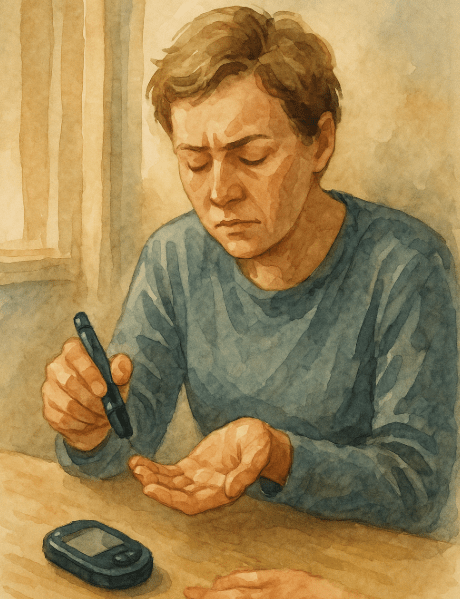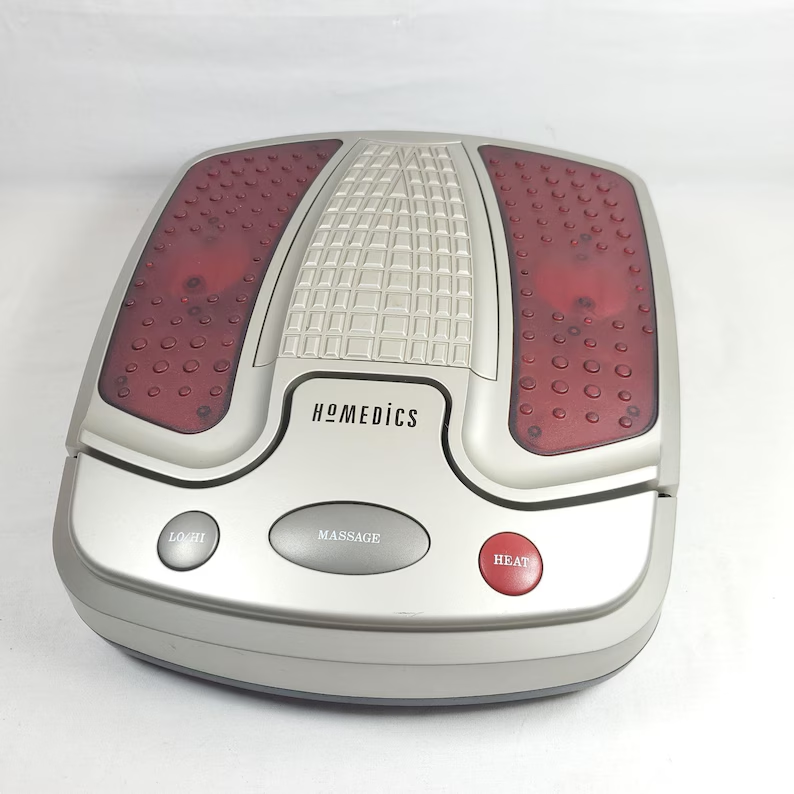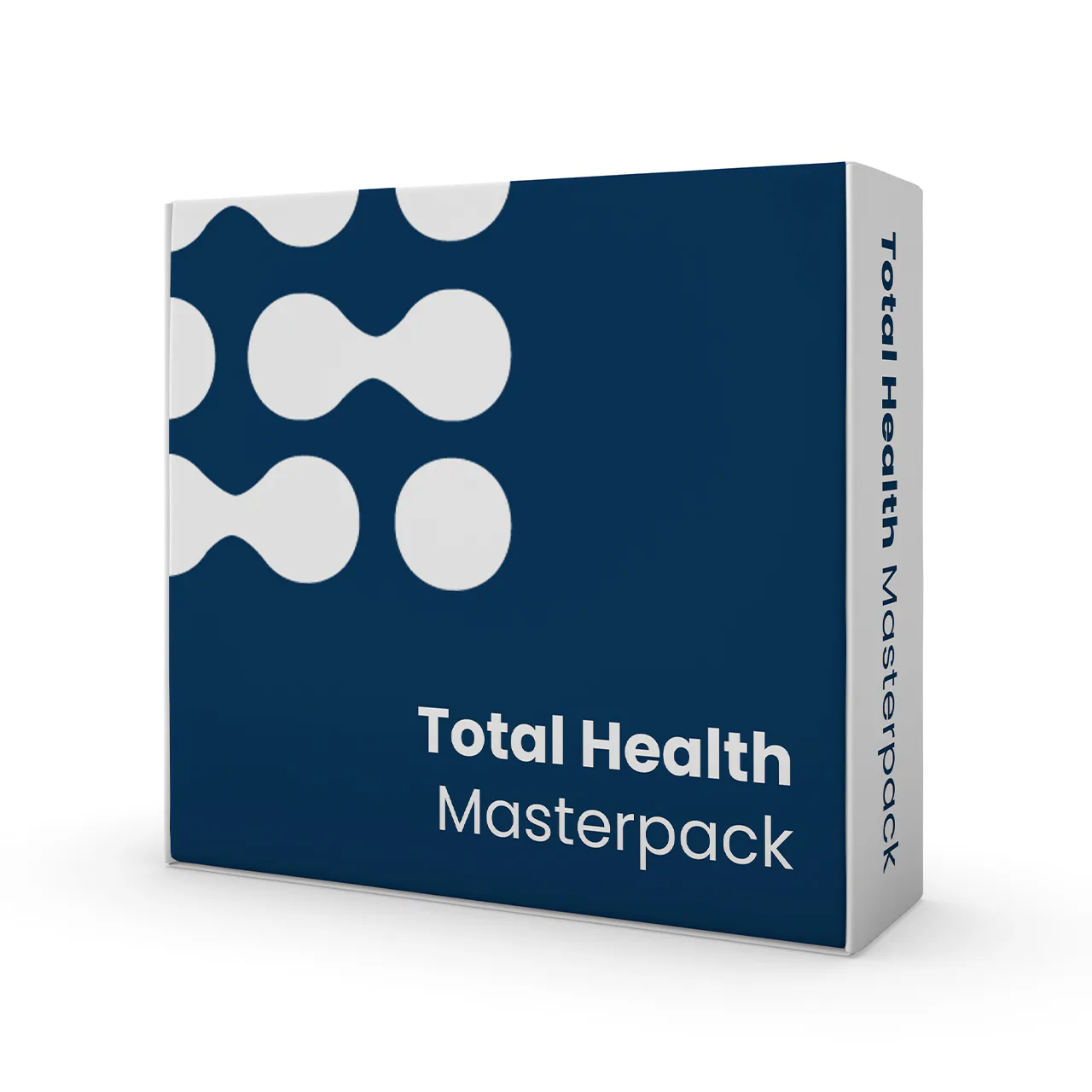Grieving Diabetes: Living Between Hope, Needles, and Fear
Grief tied to diabetes builds quietly, through routines of needles, numbers, and the constant fear of complications stealing away more than just days.

This post blends real grief with grounded knowledge. It isn’t clinical. It isn’t distant. It’s meant to sit beside you—not above you. The story you’ll read is meant to reflect what so many feel when living through or witnessing this condition: confusion, exhaustion, and quiet forms of courage.
If what you read feels familiar, please speak with your doctor. Your pain deserves more than silence.
We Lived by Numbers Until the Numbers Failed
We were governed by numbers. The relentless measurements of fasting glucose, post-meal spikes, and A1C levels that arrived every three months felt like a report card we never wanted. She would joke that her fingers had more holes than Swiss cheese. I found it funny at first, but as her laughter faded, so did my own.
There was a certain cadence to our lives. Wake up, prick a finger, eat, inject. Then we waited, watched, and clung to hope. It became a cycle we knew all too well.
🧠 Symptoms:
- Increased thirst and frequent urination
- Extreme hunger even after eating
- Unexplained weight loss
- Fatigue and irritability
- Blurred vision
- Slow-healing sores
- Frequent infections, such as gum or skin infections and vaginal infections
- Tingling, pain, or numbness in the hands or feet (type 2 diabetes)
I learned to count carbohydrates before I learned how to cook. I grasped the difference between a hypo and a hyper far quicker than I learned how to remedy either condition. She taught me to recognize the signs: shaky hands, cold sweat, vacant stares. Yet, there were still nights when those warnings slipped past my notice.
It wasn’t the injections that exhausted her; it was the relentless nature of it all. The endless cycle made even a slice of birthday cake feel like a loaded weapon.
After family dinners, she would retreat to the bathroom, tears flowing as she whispered apologies to herself as if she had broken a sacred pact. But she hadn’t. She was just weary of doing everything right yet still feeling unsafe in her own body.
Complications:
- Cardiovascular disease, including heart attack and stroke
- Nerve damage (neuropathy)
- Kidney damage (nephropathy)
- Eye damage, including blindness
- Foot damage, potentially leading to amputation
- Skin conditions, including bacterial and fungal infections
- Hearing impairment
- Alzheimer’s disease and other cognitive impairments
We did everything correctly. We counted and we planned. Yet some numbers don’t provide a warning…they arrive suddenly, like an unexpected verdict.
Causes:
- Type 1 diabetes: Autoimmune destruction of insulin-producing beta cells in the pancreas
- Type 2 diabetes: Insulin resistance and eventual insulin deficiency
- Gestational diabetes: Hormonal changes during pregnancy leading to insulin resistance
- Other types: Genetic mutations, diseases of the pancreas, certain medications
Vacations were meticulously planned around access to refrigerators. We packed backup meters, emergency juice boxes, and cooler packs as if we were gearing up for a battlefield. And in many ways, we were.
Because the enemy was always lurking. It didn’t rage or charge; it simply waited…quiet and patient…beneath the surface of her skin.
One night, she experienced a low during her sleep. I awoke to the sound of her breath uneven, her body trembling beside me. I managed to get the gel into her mouth quickly, but not in time to prevent the tears that followed. She cried not from fear, but from the knowing that next time, she might not wake up at all.
All I could do was grasp her hand and repeat the only number that mattered at that moment: “Zero. You’re at zero now. You’re safe.”
Risk Factors:
- Family history of diabetes
- Overweight or obesity
- Physical inactivity
- Age: Risk increases with age
- High blood pressure and abnormal cholesterol levels
- History of gestational diabetes
- Polycystic ovary syndrome (PCOS)
- Race or ethnicity: Higher risk among African American, Hispanic, Native American, and Asian American populations
📘 Diagnosis & Treatment
Diagnosis involves several tests:
- A1C test: Measures average blood sugar over the past 2–3 months
- Fasting blood sugar test: Measures blood sugar after an overnight fast
- Oral glucose tolerance test: Measures blood sugar before and after consuming a sugary drink
- Random blood sugar test: Measures blood sugar at any time, regardless of when you last ate
Treatment focuses on managing blood sugar levels:
- Healthy eating: Emphasizing fruits, vegetables, whole grains, and lean proteins
- Physical activity: Regular exercise to help control blood sugar
- Monitoring blood sugar: Regular checks to ensure levels remain within target range
Medications:
- Insulin therapy: Essential for type 1 diabetes and some with type 2
- Oral medications: Such as metformin, sulfonylureas, and others
- Other injectable medications: Including GLP-1 receptor agonists
Additional treatments:
- Weight loss: Especially important for type 2 diabetes management
- Bariatric surgery: May be an option for some individuals with type 2 diabetes
- Management of related conditions: Such as high blood pressure and cholesterol
I know this is heavy, and I understand that the road ahead may feel like a tangle of loss and unanswered questions. But please hear this: you are not broken because you are hurting; you are not weak because you are afraid. You are living through something real, and survival itself is a kind of grace. You are allowed to struggle, you are allowed to hope, and you are allowed to not have all the answers today. Whatever comes next, you do not face it empty-handed; you carry every moment of love that shaped you, and that will always be enough to keep going.
🎀 Gifts to help With Diabetes
🏥 Everyday Comforts for Everyday Battles
Managing Diabetes often means needing a little extra help.
Sometimes it’s about restoring dignity, ease, or simply getting through the day with less pain.
These carefully chosen tools aren’t just items; they’re small bridges back to living.
This section is about finding practical support, never shame.
Diabetic Foot Massager with Heat – Relief for the Numb, the Aching, and the Ignored
Diabetes doesn’t just affect blood sugar—it steals sensation, circulation, and comfort from the feet first. This foot massager uses heat and gentle compression to encourage blood flow and relieve neuropathy-related pain. It’s not a luxury—it’s protection. Because caring for diabetic feet isn’t cosmetic. It’s clinical. And it starts with relief.
🌿 Paths to Healing Beyond the Map
Sometimes traditional medicine isn’t enough.
If you’re exploring gentle, alternative options to help with Diabetes,
you might find comfort in plant-based compounds like **CBD or CBG**.
*This section is not medical advice, just a door left open.*
USA Medical Total Support Pack – Systemic Support for a Body Always on Alert
Diabetes wears on more than the pancreas, it hits the immune system, the nerves, the sleep cycle, and the mind. This Total Pack blends broad-spectrum CBD with sleep, stress, and immune support to help manage the full-body strain of diabetic life. It doesn’t replace insulin. But it might help the body feel less like a battleground between meals.
Need a Different Path Forward?
Every journey through grief looks different. Choose the next step that speaks to where you are now:
When You're Ready to Start Healing
Healing doesn’t mean forgetting.
It means finding small ways to carry your grief with strength and grace.
These are the stories, tools, and gentle steps to begin walking forward…at your own pace.
When You're Still in the Thick of It
Sometimes healing feels like a lie.
If you’re not ready to move on…if the pain still roars louder than the world wants to hear…this is the place where you’re allowed to feel it.
No sugarcoating. No pretending. Just truth.
When You're Holding on to Who’s Still Here
Grief reminds us to love louder.
If someone you love is still with you, this is your place to celebrate them, honor them, and create new memories while there’s still time.
Joy and sorrow can live side by side.






